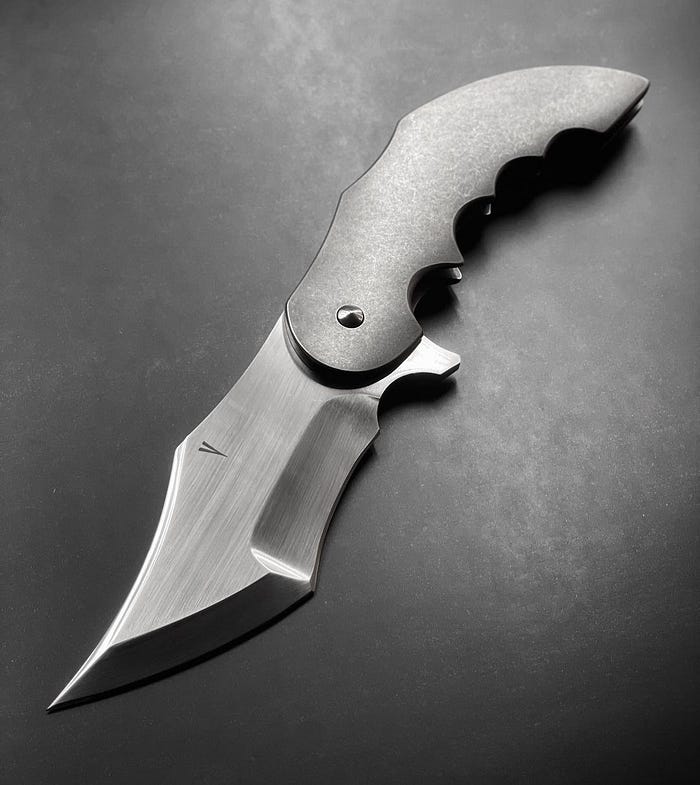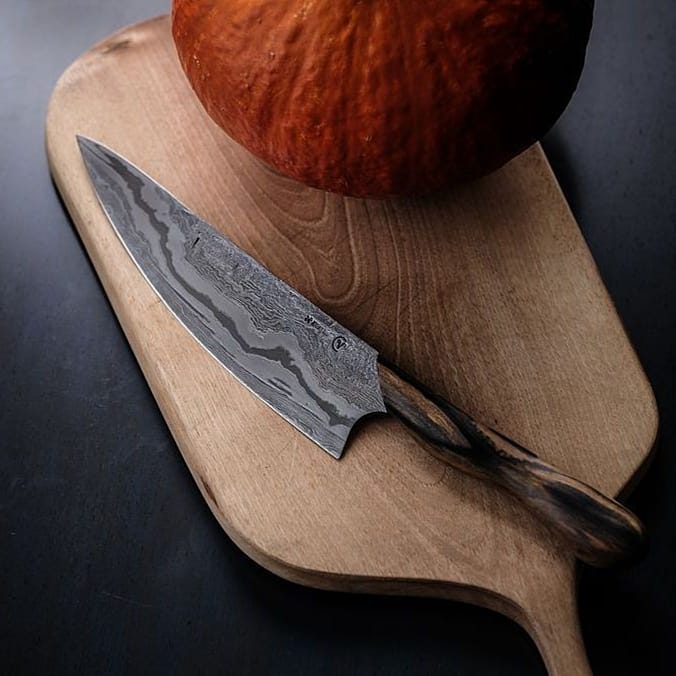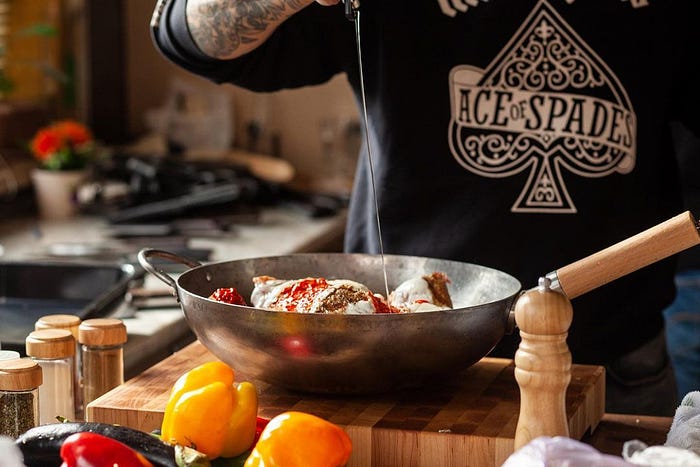
A chef’s knife, also known as a chef’s knife, is a cutting tool used to prepare food. The main purpose of the original design of the chef’s knife was to slice and separate large pieces of beef. Today, it is the main universal knife for most western chefs.

The blade length of a chef’s knife is usually 8 inches (20 cm) and 1 + width is 1 ⁄ 2 inches (3.8 cm), but the length of individual models is 6 to 14 inches (15 to 36 cm). Western chef knives have two common blade shapes, French and German. The German style knife is deeper and more continuous along the entire blade; the French style edge is straighter at the end and then bends upward to the tip.
A Japanese gyuto (牛刀ぎゅうとう), gyūtō), which literally means “beef knife”, is the Japanese version of French (or Western) chef’s knife. They were originally called “yo-boucho”, which means “western kitchen knife”.
The Santoku knife is basically a Japanese chef’s knife. It is smaller, lighter, sharper, and has different blade shapes.


The knife of a chef in China is completely different, just like a kitchen knife.
A modern chef’s knife is a versatile knife designed to perform well in many different kitchen tasks, rather than perform well in any specific task. It can be used to chop, slice and chop vegetables, cut meat and separate large pieces.
What to look for in the knife
Once you have a knife in your hand (see the image above for the correct way to hold it), you should immediately understand whether it is suitable. It should feel comfortable, like a natural extension of your hand. It should inspire confidence, not instill fear. If it doesn’t feel right, continue. If it feels good, start cutting vegetables (or simulate cutting vegetables) and pay attention to your reaction to the physical properties of the knife.
Weight: You need to try multiple tools to find the ideal tool weight. One school of thought believes that a chef’s knife is easier to cut through food because it has more power to “fall”. Another believes that the lighter chef’s knife flows more freely, allowing you to manipulate the knife more skillfully. Bottom line: choose the style that suits you.
Balance: “Perfect balance” is in the hands of the beholder. Judge the balance by holding the handle of the knife. If it feels uncomfortable to press on the back of the handle or the blade, then it may not be for you. An unbalanced knife will make you work harder. Balance between left and right is also very important. When you get off the blade, the knife should not feel unstable, as if it wants to sway to one side or the other.
Size: The 8-inch chef’s knife is the most popular among home cooks due to its versatility. A 10-inch blade can cut more volume, but it can be scary. A 6-inch chef’s knife can provide an element of agility, like a paring knife, but it’s not enough when dealing with a lot of work or cutting large pieces (such as watermelon).


How to hold a chef’s knife
Please pay attention to the non-knife and the way of holding the knife in the photo.
For non-swordsmen:
Curl your fingers underneath to protect your fingertips.
The thumb and little finger are behind the other fingers.
The side of the blade (but not the edge) rests on the middle knuckle of the non-scalpel hand. This can help you prevent the knife from falling on your finger. It can also help you measure the size of the cut and move your hand back to the food after each cut to prepare for the next cut.
Cut down by a rocking motion from the tip of the blade to the end of the blade. The knife is not sawing food back and forth.
For the swordsman:
Check how your thumb and index finger hold the blade just beyond the handle. This helps make the knife an extension of your arm and provides you with better control and cutting accuracy.
To finely chop or chop certain foods (such as small bunches of herbs or garlic), you can hold the handle with one hand and place the other hand on the blade.
The tip of the blade remains in contact with the cutting board. The blade swings up and down until the food is cut to the desired size.
To prevent vegetables and fruits from slipping off the cutting board, cut them in half before further slicing or shredding. This helps to hold them firmly on the cutting board and helps prevent you from cutting yourself.


YIER Knife Set
Material: X50Cr15 Superior high-Carbon stainless steel
High quality forged blades, which are made of German stainless steel, W-Nr. 1.4116.
It contains 0.45 to 0.55% carbon, 14 to 15% chromium, 0.5 to 0.8% molybdenum and 0.1 to 0.2% vanadium.
The purpose of the molybdenum alloy is to increase the resistance to pitting of the material.
Transparent acrylic knife holder. Beautiful acrylic knife holder, you can clearly see the knife you want to use, and pull out the knife you want.
One-piece design. The handle and the blade are an integrated design, so there is no problem of the blade falling off the handle, and there is no possibility of the knife handle becoming loose.
Easy to store and maintain. YIER knife set is made of high-grade German stainless steel, with sharp blades, not easy to rust, and long service life.
Excellent sharpness.
100% satisfaction guaranteed. Every knife set produced by YIER is backed by outstanding quality assurance, so you can buy it with confidence. If you have any questions, please feel free to contact us, we are always by your side.
Maintenance tips: In order to protect the sharpness and gloss of the knives, please do not wash the knives in the dishwasher. Keep the knives clean and dry after use.

























